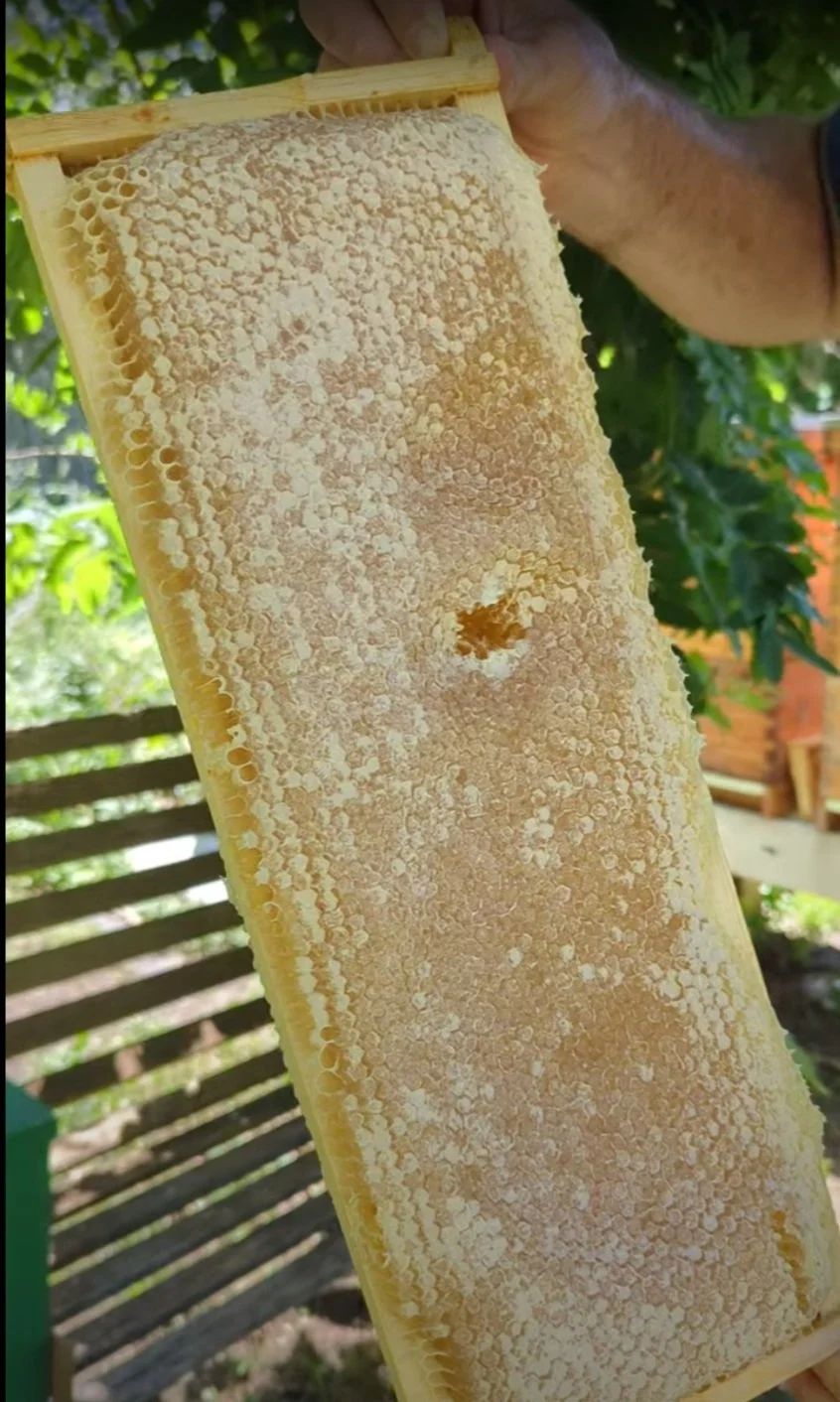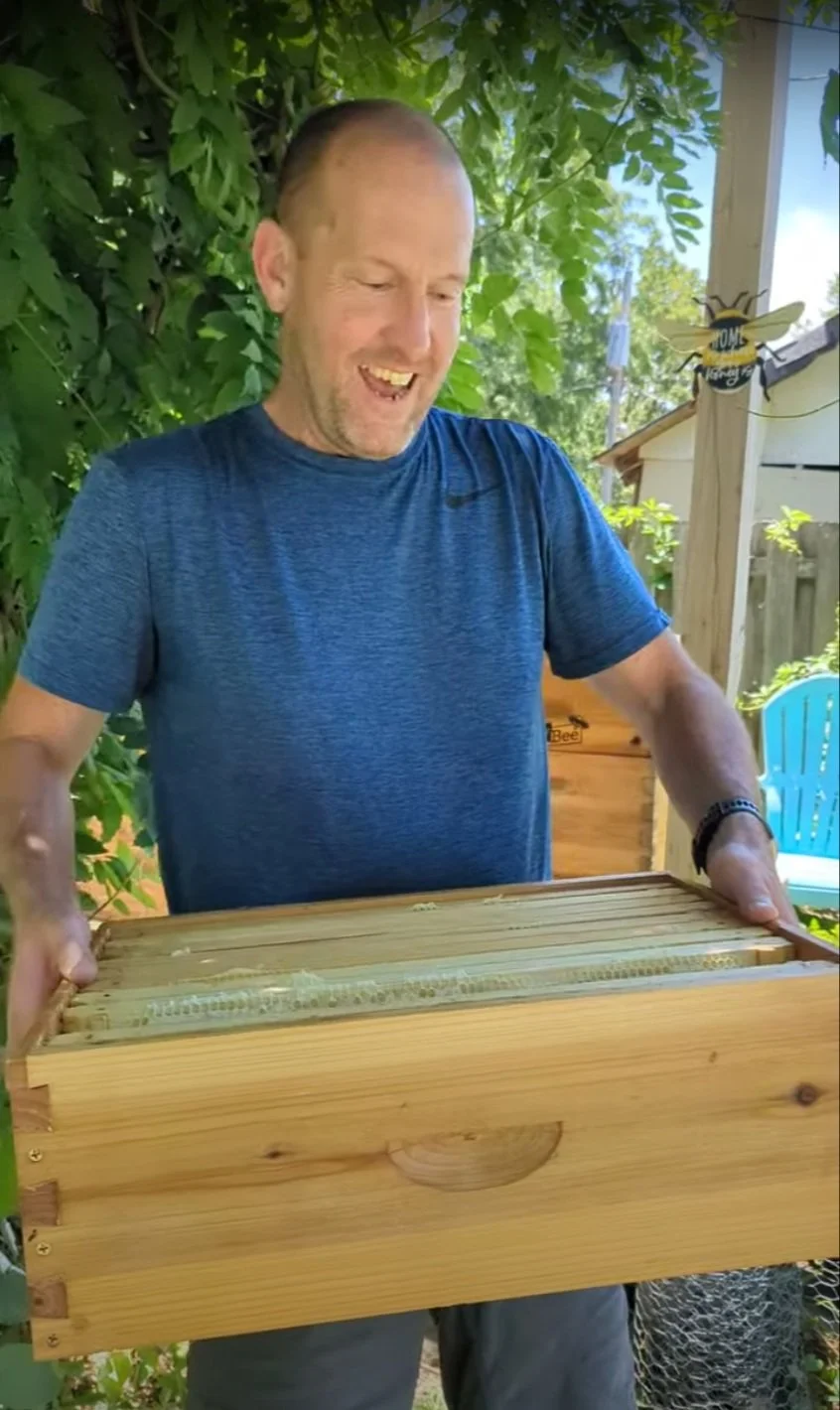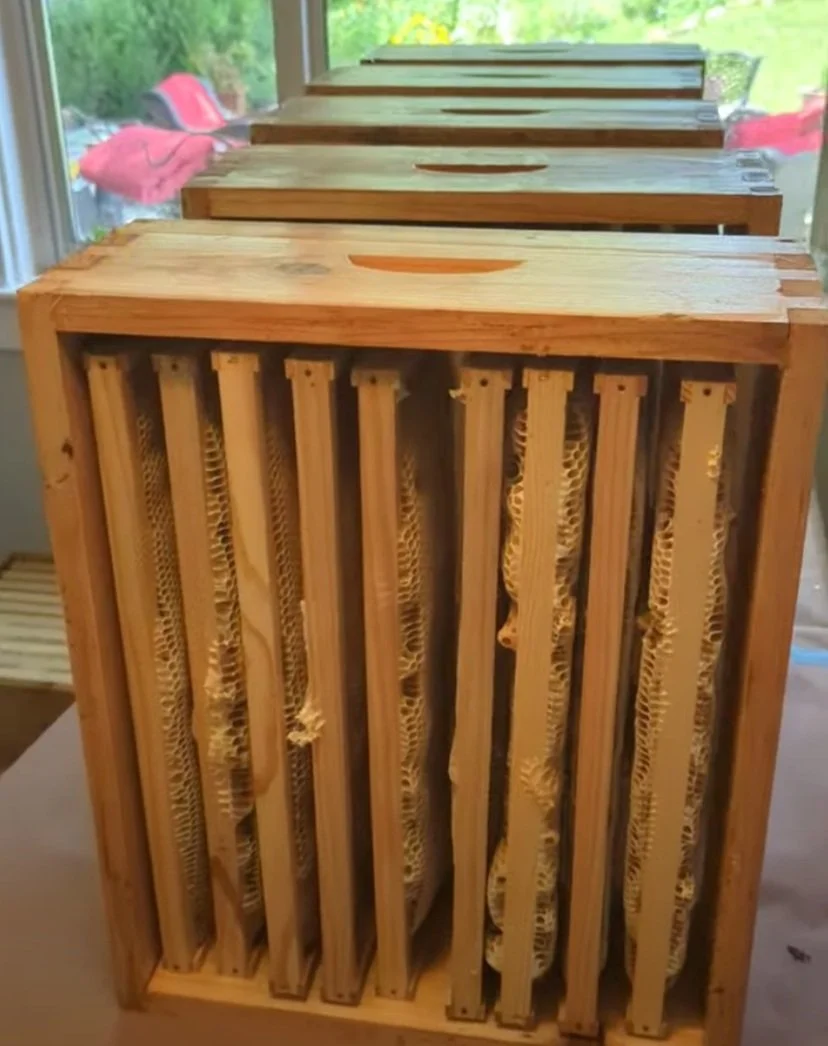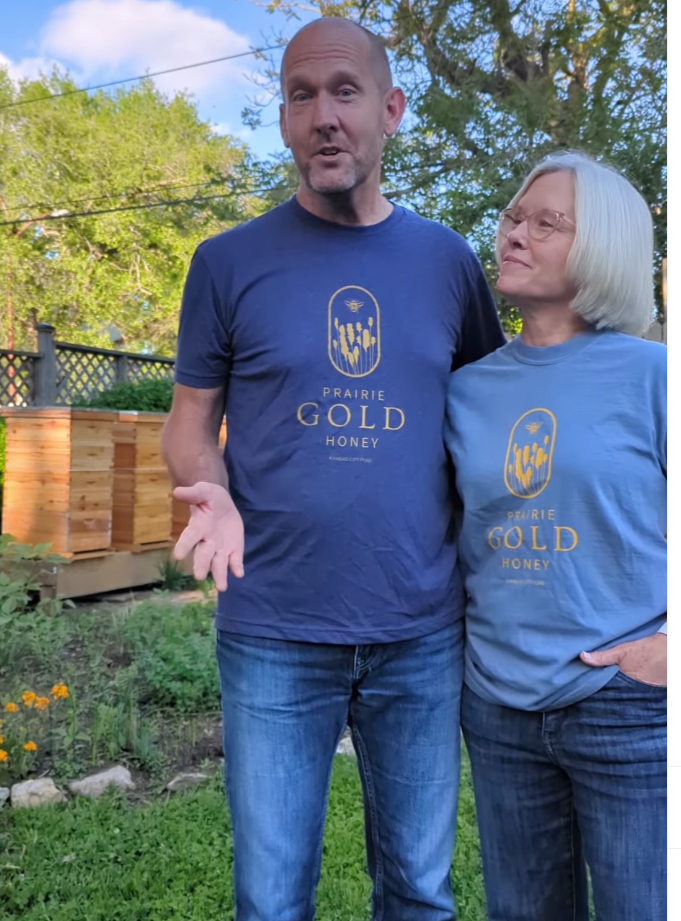Honey Harvest Week!
This is the week every beekeeper looks forward to: honey harvest week! In this part of the country, the first week of July is a pretty standard time for this exciting event! The nectar flow is winding down due to hotter weather, and the bees have covered a lot of their honey with a wax capping.
The honey harvest has five important steps:
Pulling Frames: The first step in the process is to go through each hive and pull the frames that have capped, or mostly capped honey. In a very productive hive, this could be up to 30 frames! Of course, it’s not as easy as just grabbing the frames and moving one. The hard part is getting all the bees off of each one. This involves shaking most of them off and then using a bee brush to brush the rest of them off. This year, I pulled 87 frames full of honey! A pretty good haul.
Reducing Moisture Content: The nectar bees bring in is made up partly of water. The mix the nectar with enzymes from their own body to make honey. But, and important part of the process includes reducing the moisture content. The bees do this by fanning their wings over the honey. Generally, when it reaches 18% or below, they cover it with a wax capping. The 18.6% water content mark is critical, because anything above that is at risk of fermentation. Even when the frames are capped, my standard practice is the use a “drying room” to further reduce the moisture level to around 17%. This makes a slightly thicker honey and ensures that it won’t ferment in the jar. This process involves setting up the frames in a small room with a dehumidifier and a fan for circulation. After about 48 hours, I test the moisture content using a refractometer. If it’s at about 17%, I move on to the next step!
Uncapping: Capped honey is not all that easy to extract from the comb, unless you have the right tools. A hot-knife and uncapping fork are useful for getting the wax cappings off. With a hot-knife, you can slice right through the wax comb and expose the pure honey. The cappings and some honey fall into an uncapping tank to be recouped later.
Extraction: After uncapping, the fresh frames of honey are placed into an extraction tank, which is like a large centrifuge. The uncapped frames are then spun really fast to draw the honey out of the comb, which then slides down into the bottom of the tank. The last part of this step involves letting the honey out through a “honey gate” at the bottom of the extraction tank, allowing it to run through a two part sieve and into a 5-gallon, food grade bucket.
Bottling: The final step in the harvest is getting the honey from the buckets into jars for distribution. In the past I’ve used buckets with honey gates and done this process manually. This year, I have invested in two larger pieces of equipment that will help me handle a larger volume more efficiently: a warming tank and a bottling machine. The warming tank will hold 15 gallons of honey and warm it to about 90 degrees to help if flow more smoothly. The bottling machine will draw the honey through a special hose and move exactly the designated amount (either 8 oz or 16 oz) into bottles. Then, of course, comes corking, sealing, and labeling the bottles.
Order Your Honey Now!
With harvest happening right now, it’s time to order your honey! Please use the order form on our website to let us know how many jars of each size you’d like. Payment can be made when you pick up your honey. There are several pick up times over the next few weeks:
July 4th: 10:00am - 4:00pm (For Honey Club Members Only)
July 5th 10:00am - 5:00pm
July 7, 9, 14, 16 - 6:00pm - 8:30pm
Join the Prairie Gold Honey Club!
Become a member and save $2 per jar on our premium honey. To become a member, simply purchase a Prairie Gold Honey T-shirt or hoodie and you’re in the club! Club members also have the opportunity to return our branded jars for an additional $1 off each jar purchased. And, if you happen to come while I’m bottling honey, and you bring your own jar of any size (branded or not), I’ll fill it up right from the tap, and you’ll pay only $1 per ounce with no mark up for packaging!








